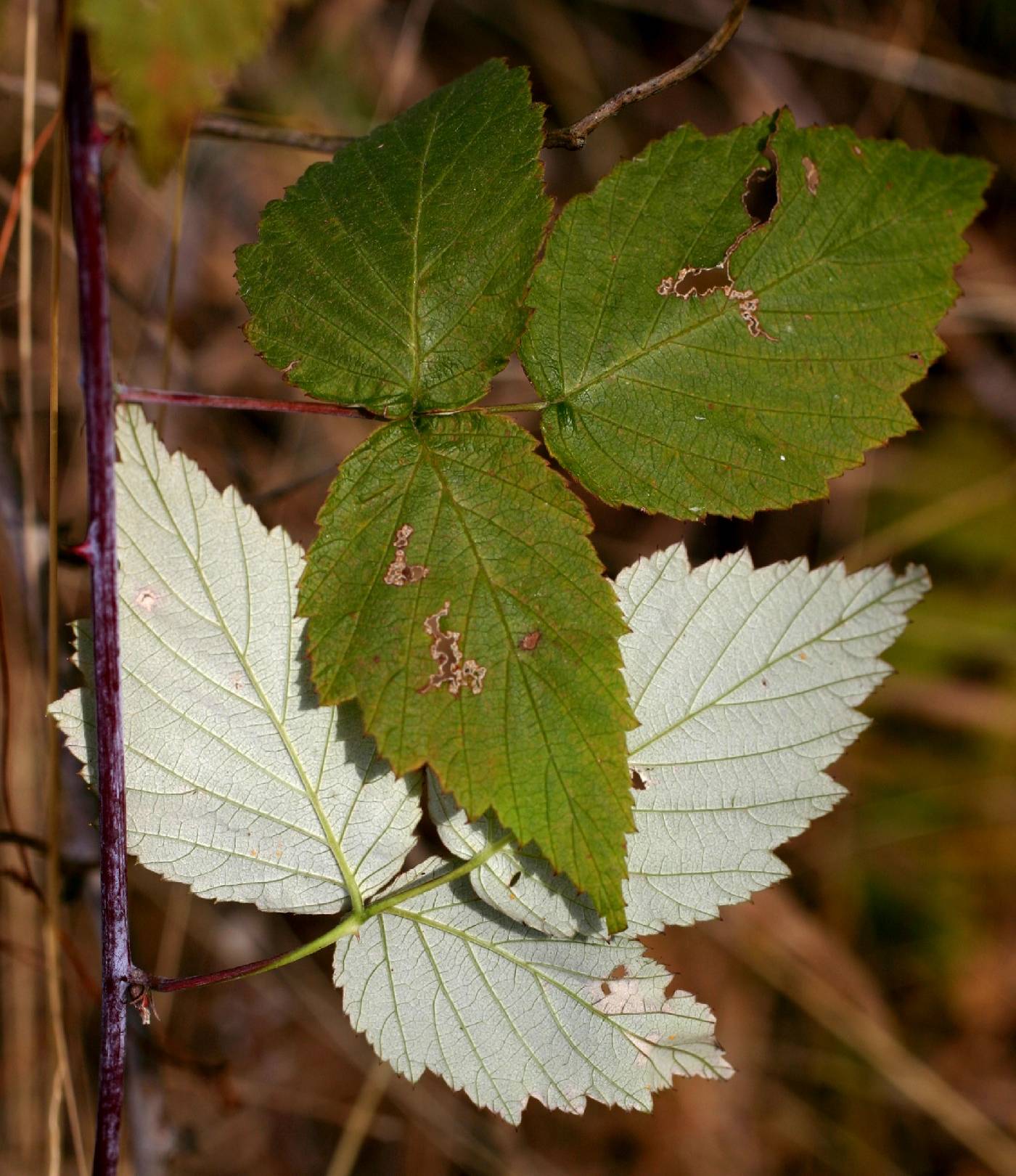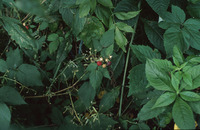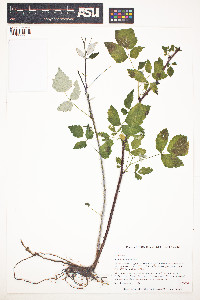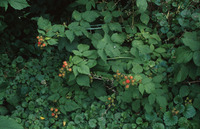|
Family: Rosaceae
black raspberry
[Rubus occidentalis var. pallidus L.H.Bailey] |
Similar species: Page is under construction. Please see link below for general information on the genus Rubus. Flowering: early May to late June Habitat and ecology: Very common along roadsides, edges of woods, fencerows, bluffs, and disturbed woodlands. Occurence in the Chicago region: native Etymology: Rubus is the Latin name for bramble and also means red. Occidentalis means "from the western hemisphere." Author: The Morton Arboretum Stems erect or ascending, or sometimes arching and rooting at the tip, not glandular, strongly glaucous at least the first year, sparsely beset with stout, straight or hooked prickles with expanded base, as are also the petioles and especially the pedicels; lfls mostly 3, or 5 on the primocanes, the intermediate pair then adjacent to the lower; uppermost lvs of the floricane often simple; terminal lfl broadly ovate, rounded or subcordate at base, sharply, deeply and irregularly serrate; lower lfls similar but smaller and narrower; all lfls thinly gray-tomentose beneath; fls 3-7 in a dense, umbelliform cyme, often also 1 or 2 from the upper axils; pet white, shorter than the sep, narrowly obovate, at first erect, soon deciduous; fr purple-black (yellowish), with narrow belts of white tomentum between the drupelets, 1 cm thick, separating as a unit from the persistent receptacle; 2n=14. Dry or moist woods, fields, and thickets; Que. to N.D. and e. Colo., s. to Ga. and Ark. May, June. Also cult. in many cultivars. Hybridizes with no. 7 [Rubus idaeus L.].
Gleason, Henry A. & Cronquist, Arthur J. 1991. Manual of vascular plants of northeastern United States and adjacent Canada. lxxv + 910 pp.
©The New York Botanical Garden. All rights reserved. Used by permission. |




